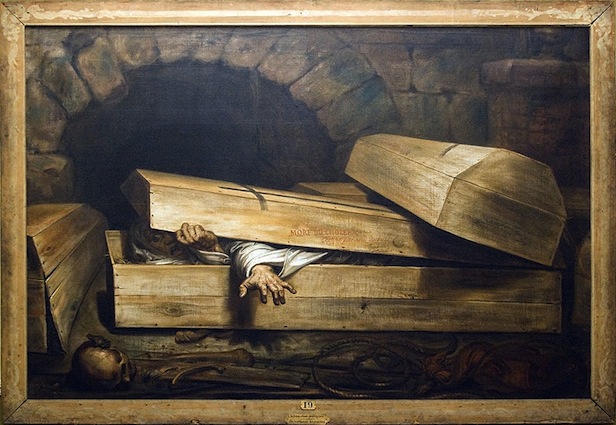The fear of being buried alive is still common today, but during the cholera epidemic of the 18th and 19th centuries, the fear was very much justified. In 1905 the English reformer William Tebb found accounts of 219 cases of near live burial, 149 actual live burials and, horrifyingly, 10 cases of live dissection. These fears were not helped by popular literature that included such gruesome tails such as ‘The Premature Burial’ by Edgar Allen Poe.
This led to the development of the safety coffin, a coffin designed to allow the occupant to signal if they had been buried alive. The very first safety coffin had a window to allow light in, an air tube and a special pocket with a key for the coffin lid and tomb door. Soon more safety coffin designs emerged – a common feature was a bell for signaling, and even a trumpet for checking the smell of decomposition. Safety coffins are still being developed today, though featuring much more technical equipment – such as intercom systems and heart monitors. However, there have been no recorded cases of any of these devices actually saving someone’s life.

